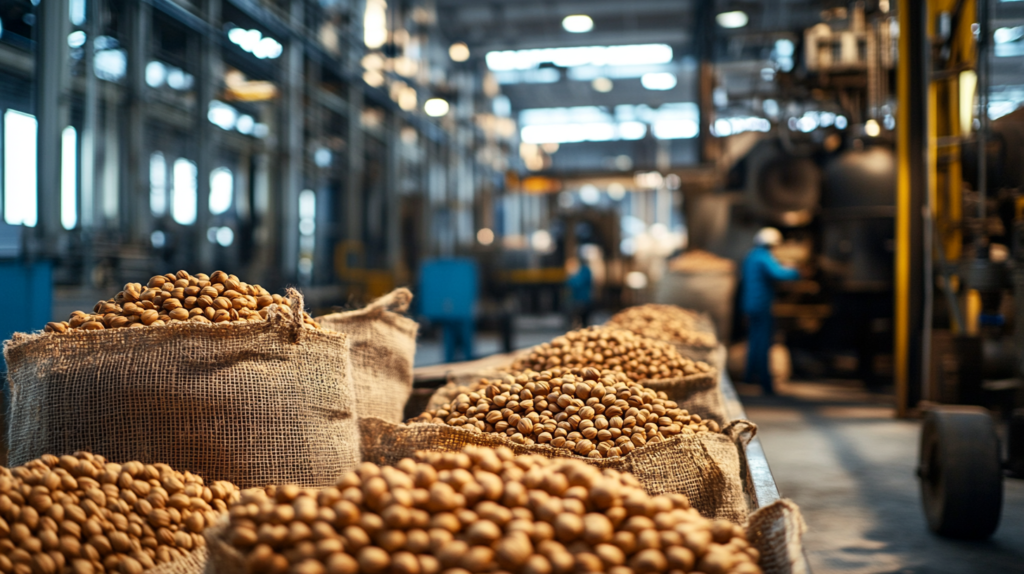Trade Policies in the Hazelnut Industry
The hazelnut industry is a significant player in the global agricultural market, with its production centered primarily in a few key regions around the world. Trade policies, which encompass tariffs, subsidies, import/export regulations, and trade agreements, play a crucial role in shaping the dynamics of this industry. This essay explores how these trade policies affect the hazelnut industry, focusing on production, pricing, market access, and competitiveness.
Global Production and Market Dynamics
Hazelnuts are predominantly produced in Turkey, which accounts for approximately 70% of the world’s production. Other significant producers include Italy, the United States (particularly Oregon), Azerbaijan, and Georgia. The global production of hazelnuts averages around 850,000 tonnes annually, with a market value of approximately $3 billion [1]. The concentration of production in a few regions makes the industry susceptible to local trade policies and global market fluctuations.

Impact of Tariffs and Trade Barriers
Tariffs are a common trade policy tool that can significantly impact the hazelnut industry. When countries impose tariffs on hazelnut imports, it can lead to higher prices for consumers in those countries and reduced competitiveness for exporters. For instance, if the European Union, a major consumer of hazelnuts, imposes tariffs on Turkish hazelnuts, it could lead to a decrease in Turkish exports, affecting the local economy and potentially leading to surplus production.
Non-tariff barriers, such as stringent quality standards and phytosanitary regulations, also affect the industry. These barriers can limit market access for producers who cannot meet the required standards, thus affecting their ability to compete in international markets.
Subsidies and Domestic Support
Subsidies provided by governments to domestic hazelnut producers can distort global trade by making it difficult for unsubsidized producers to compete. For example, if the U.S. government provides subsidies to its hazelnut farmers, it could lead to increased production and lower prices, affecting international competitors who do not receive similar support.
Domestic support policies, such as research and development funding, can also enhance the competitiveness of local industries. In Ontario, Canada, for instance, efforts have been made to develop cold-hardy hazelnut varieties suitable for local climates, which could help local producers compete more effectively in the global market [1].
Trade Agreements and Market Access
Trade agreements play a critical role in facilitating or hindering the flow of hazelnuts across borders. Agreements that reduce tariffs and other trade barriers can open up new markets for hazelnut producers. For example, a free trade agreement between Turkey and the European Union could enhance Turkish hazelnut exports by reducing tariffs and streamlining customs procedures.
Conversely, the absence of trade agreements or the imposition of trade sanctions can restrict market access. For instance, political tensions between countries can lead to trade restrictions that limit the ability of hazelnut producers to access certain markets.
Market Power and Competition
The global hazelnut market is characterized by a few dominant players, which can lead to market power imbalances. Turkey’s dominance in production gives it significant influence over global prices. However, this concentration also makes the market vulnerable to supply disruptions due to geopolitical issues or natural disasters.
Market power can lead to imperfect competition, where dominant producers can influence prices and market conditions to their advantage. This can be detrimental to smaller producers who lack the scale to compete effectively. Efforts to diversify production and reduce reliance on a few key suppliers can help mitigate these risks and promote a more balanced market.
Challenges and Opportunities
The hazelnut industry faces several challenges related to trade policies, including:
- Volatility in global markets: Fluctuations in currency exchange rates and global demand can impact hazelnut prices and trade flows.
- Environmental concerns: Climate change poses a risk to hazelnut production, particularly in regions vulnerable to extreme weather events.
- Sustainability and ethical sourcing: Increasing consumer demand for sustainably and ethically sourced products can influence trade policies and market dynamics.
However, there are also opportunities for growth and innovation:
- Value-added products: The increasing popularity of hazelnuts in confectionery and other value-added products presents opportunities for producers to diversify and expand their market reach.
- Technological advancements: Innovations in agricultural practices and processing technologies can enhance productivity and quality, making producers more competitive globally.
- Emerging markets: As new markets develop, particularly in Asia, there is potential for increased demand and trade opportunities for hazelnut producers.
Conclusion
Trade policies have a profound impact on the hazelnut industry, influencing production, pricing, market access, and competitiveness. While tariffs, subsidies, and trade barriers present challenges, trade agreements and technological advancements offer opportunities for growth and diversification. As the industry continues to evolve, stakeholders must navigate these complex dynamics to ensure sustainable and equitable growth in the global hazelnut market. By understanding and adapting to trade policies, producers can better position themselves to capitalize on emerging opportunities and mitigate potential risks.
Sources:
[1] https://www.publications.gov.on.ca/store/20170501121/Free_Download_Files/300751.pdf
[2] https://www.researchgate.net/publication/331230383_A_Market_Power_Analysis_on_Global_Hazelnut_Industry
[3] https://www.researchgate.net/publication/329448522_World_hazelnut_trade_networks






